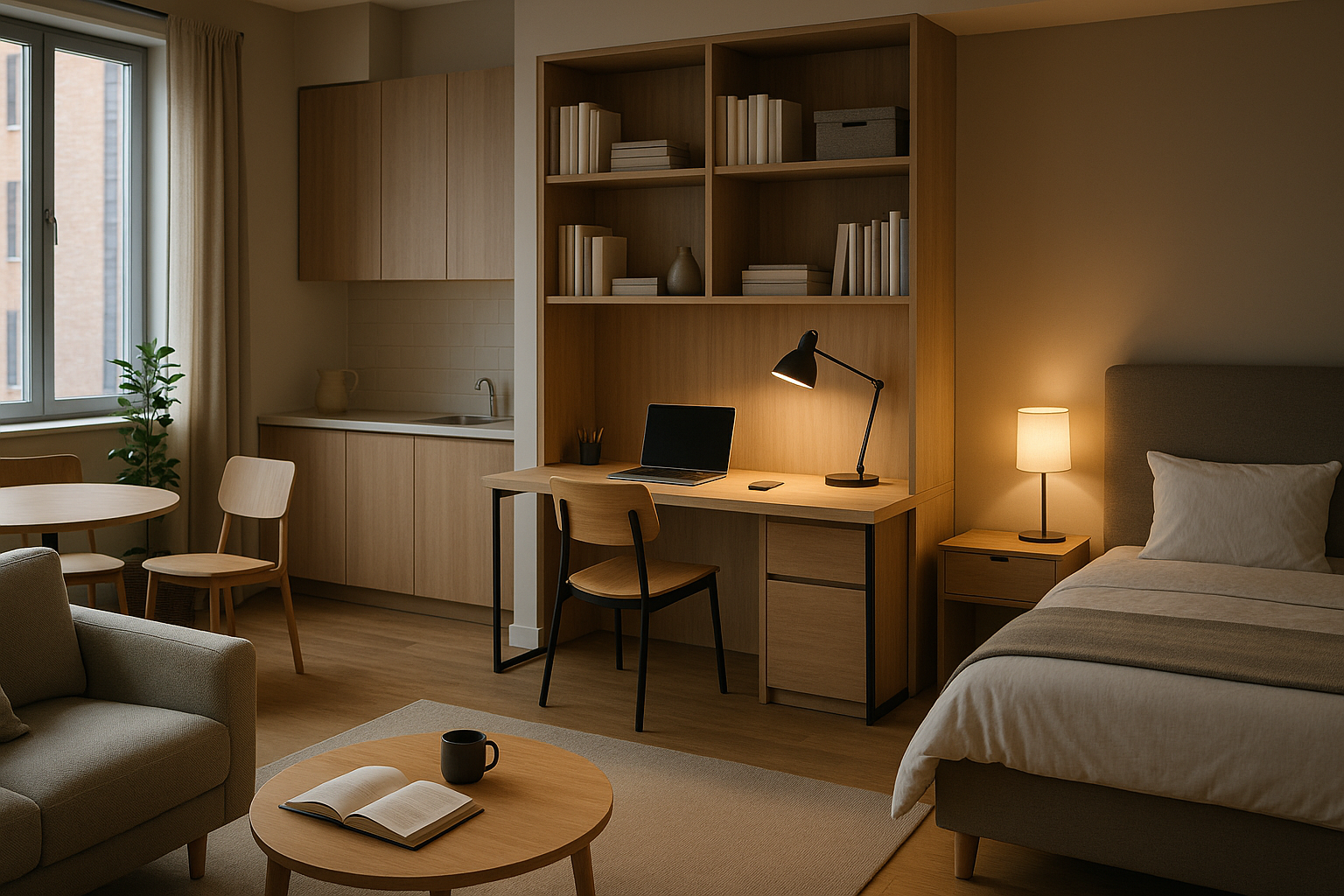"Reimagining Spaces: The Rising Popularity of Multifunctional Rooms"
Introduction In the ever-evolving world of interior design, one trend is making waves for its practicality and ingenuity: Multifunctional rooms. This game-changer is transforming how we perceive and utilize our living spaces, making every square foot count.

The Genesis of Multifunctional Rooms
The concept of multifunctional rooms isn’t entirely new. In fact, it can be traced back to the efficient use of space in tiny medieval cottages, where a single room served multiple purposes. Fast forward to the 21st century, this idea has been reinvented and reintegrated into modern homes, driven by the need for flexibility and optimized space utilization. The increasing prevalence of open-plan living, shrinking urban dwellings, and the rise of remote work are key developments that have propelled this trend to the forefront of interior design.
Trending Multifunctional Room Designs
Today, multifunctional rooms are all about strategic planning and creative problem-solving. It’s about transforming a home office into a guest room, a dining room that doubles as a study, or a kitchen that moonlights as a lounge. It’s about designing spaces that are fluid, adaptable, and multi-purpose. Some of the popular multifunctional room ideas include the kitchen-diner, the bed-office, and the living room cum yoga studio. The beauty of these designs lies in their ability to morph according to the needs of the homeowner.
The Practicality and Market Trends
The multifunctional room concept is not just about aesthetics or space-saving. It’s a practical response to changing lifestyles and societal shifts. With more people opting for remote work, there’s a growing need for home offices. Likewise, shrinking urban dwellings necessitate smarter use of space. Market trends indicate that furniture with multiple uses, such as sleeper sofas or desks with built-in storage, have seen an upsurge in demand. This design trend enhances daily living by offering flexibility, reducing clutter, and making homes more adaptable and efficient.
The Design Techniques
Creating a multifunctional room requires a blend of creativity, strategic thinking, and smart design. The basic principle revolves around defining zones for different functions. This can be achieved through furniture placement, color schemes, or using rugs to visually delineate spaces. Innovative storage solutions are another key aspect—it’s about finding clever ways to tuck away items when they’re not in use. Lighting also plays a crucial role in setting the right mood for different activities.
Looking Forward: The Future of Multifunctional Rooms
The rise of multifunctional rooms is not a passing fad. It’s a response to evolving lifestyles and societal needs. As we continue to navigate the post-pandemic world, the demand for flexible, adaptable spaces is likely to increase. This trend is poised to shape the future of interior design, pushing us to reimagine our homes and how we live in them.
In conclusion, multifunctional rooms are not just about space optimization. They’re about creating spaces that reflect our multifaceted lives, enhancing comfort, functionality, and aesthetics in our homes. So, whether you’re a small-space dweller, a remote worker, or someone who just loves the idea of a flexible, adaptable home, this trend is worth exploring.




